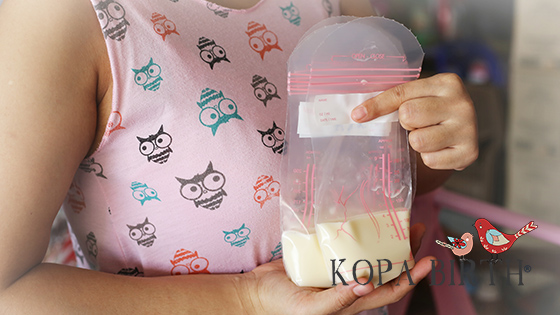
Estimated reading time: 7 minutes
Besides an occasional hot dog or Starburst, I like to know what ingredients are in the food I eat. (With that hot dog or Starburst, however, it’s just better to not even ask.) All kidding aside, society seems to now care even more about the impacts of the ingredients we eat. In particular, more parents now read the food label before handing their kid a snack. So you might be wondering, “What’s in breast milk? What is my baby actually eating?!” Well, good news, you can’t get more organic than mama’s milk. Let’s talk all about the goodness in breast milk!
Scientists still continually find new components and benefits of breast milk (3; 6). Breast milk includes the following ingredients.
One of the most important and unique components of breast milk is antibodies (1; 2; 3; 5). Antibodies protect your baby from illnesses and infections. Specifically, they can neutralize bacteria and viruses. Altogether, there are five types of antibodies, and breast milk contains all five!
Breast milk also contains growth factors (1; 3; 7). These support healthy growth in the following areas:
Additionally, breast milk contains all of the following hormones: prolactin, oxytocin, prostaglandins, insulin, thyroid stimulating hormone, adrenal steroids, relaxin, thryoxine, and epidermal growth factor. Hormones have the following benefits (1; 3; 5; 7):
Breast milk contains all the following minerals: sodium, zinc, iron, calcium, copper, magnesium, selenium, and other trace elements (3).
Vitamin D and K are present in breast milk, though in small traces. (Click here to learn more about why breastfed babies need Vitamin D.) Minerals and vitamins have the following benefits (1; 3):
Breast milk also has the following components:
Did you know your milk is unique to you and your baby? And do you know what’s really crazy? Breast milk is a living fluid (3). It adapts to what your baby needs at any given moment (1; 3). Really! It’s true! This aspect alone makes breast milk superior to formula. Your custom-made milk recipe will change in the following ways to help your baby:
Breast milk drastically changes during the first few weeks of your baby’s life (4). In your baby’s first few days, the milk you produce at first is called colostrum. Colostrum has the following properties (4):
During the first week of your baby’s life, colostrum transitions to mature milk (2). Mature milk is designed for your rapidly growing baby. It has the following properties (5):
If your baby is born preterm, your colostrum and mature milk will produce more protein, different types of fats, and antibodies that a preterm baby specifically needs (2; 5).
Breast milk changes fat content depending on how long it’s been since the last feeding (5; 6). Also, it changes if it’s hot or cold outside, by adjusting the water or fat content (6).
Breast milk even changes during each feeding! As the feeding begins, your milk starts out low in fat and gradually increases. Hindmilk, or the fattier milk produced a few minutes into each feeding, provides more calories, fat, and protein. So this helps your baby end each feeding feeling full and satisfied (6; 7).
As mentioned before, breast milk contains antibodies that help prevent sickness (2). For example, if you develop a cold while breastfeeding, your body produces antibodies to help you fight that cold. These special antibodies will also pass to your baby through your breast milk. This new and improved breast milk recipe will help your baby heal quickly from the cold or help him avoid getting the cold altogether (5).
Breastfeeding works as a supply and demand system. The more your baby eats, the more milk you produce. This allows your baby to tell you how much milk she needs. Additionally, she can receive just the right amount of nutrients she needs at any stage of growth (5).
Breast milk is impossible to duplicate (3; 5). As scientists continue to find new components of breast milk, formula manufacturers cannot keep up (6)! Breast milk contains at least over 200 nutrients not found in formula (7)! Breastfeeding is certainly the ideal recipe to feed your baby.
Formula is typically made from processed cow’s milk (4), though there are different types of formula, including goat’s milk or soy. Ingredients vary by type, brand, or country, but formula might contain the following (4):
Compared to formula, breast milk is better across the board. A few more benefits of breast milk to note (3; 6):
Click here to learn more about the countless benefits of breastfeeding.
Although breast milk is ideal, special situations may prevent you from breastfeeding (5). In those cases, there are options! For example, babies can receive expressed milk, milk from a food bank, or formula. If you have any questions or doubts, talk to your caregiver. You can also consult a lactation consultant, your baby’s caregiver, or a childbirth educator (7).
How you feed your baby does not reflect on who you are as a loving parent. Every situation is different. No matter how you feed your baby, you should feel supported. After all, you’re keeping a little human alive, nourished, and loved. You’re amazing!
Kopa Birth’s online childbirth classes allow you to prepare for a natural childbirth in the comfort of your own home, 24/7. Enroll today in our free online childbirth class to learn more about preparing for natural childbirth.
Besides an occasional hot dog or Starburst, I like to know what ingredients are in the food I eat. (With that hot dog or Starburst, however, it’s just better to